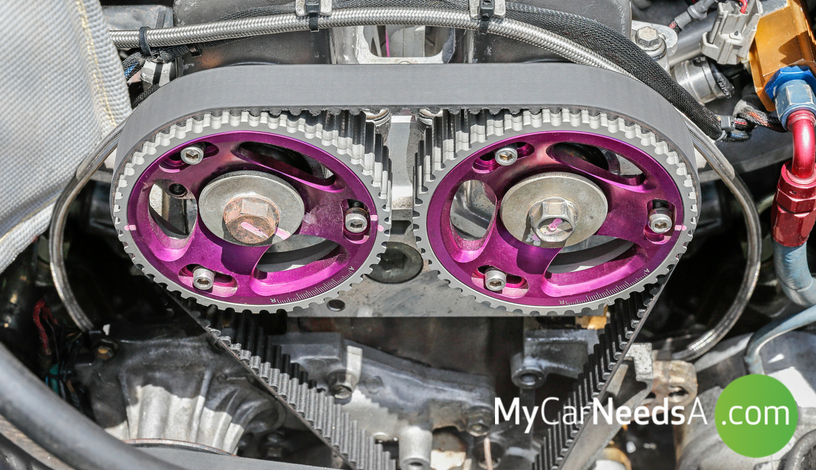
The engine damage cannot be assessed until the timing belt is replaced. As I understand it there is possibility that in breaking the timing belt may have damaged some of the valves in the engine. You will need to know your engine manufacturer and size.The timing belt broke on my 2000 Plymouth Neon. NOTE: So how do you know if you have an interference or non-interference engine? This site has one of the best lists I’ve seen.
Car timing belt broke plus#
This is especially important if you have an interference engine (see footnote), as a few hundred dollars in preventative maintenance may save you thousands later on, plus it buys you peace of mind knowing there isn’t a ticking time bomb under the hood. It you are unsure of the number of miles on your current timing belt, it may be worth having it replaced regardless.
Car timing belt broke manual#
Always check your owners manual for specifics. Each manufacturer has a specific replacement interval for the timing belt (usually in miles). Even just replacing a single cylinder head can incur a few hundred dollars in shop labor costs plus the cost of parts. Repairs costs can range between several hundred to several thousand dollars. Damage can range from a few bent valves (requires a new or rebuilt cylinder head) to complete destruction of the engine (pistons, cylinders, cylinder heads and more). This time the story had a happy ending, but for many engines out there a snapped timing belt can mean complete disaster. With a new belt in place and the pulleys timed correctly the engine started up happily.
Car timing belt broke install#
The mechanic was able to install a new timing belt after rotating the camshaft pulley to its correct position (which had fallen out of sync after the old belt broke). But even as the engine coasted to a stop the pistons never touched the valves. The valves simply stopped wherever they were when the belt broke, making internal combustion impossible. When his timing belt broke the valves of the engine stopped opening and closing in sync with the movement of the pistons. My friend’s car had a non-interference engine. Kind of like making egg salad with a jackhammer. An interference engine means that if a valve is open as the piston goes by, it will at minimum bend the valve, but at worst it will snap the valve head off and proceed to bang everything in the cylinder to pieces. A non-interference engine means that even if a valve is wide open as the piston goes by, it won’t touch it. In simplest terms the interference part has to do with whether or not the piston will strike a open valve as it reaches the top of the cylinder. After getting the year/make/model and engine specs of the car I quickly found that my friend may have been lucky, as this was a non-interference engine.


Now things were getting serious, which meant it was “Ask My Car Guys” time.

Peeking behind the timing belt cover confirmed the worst: a broken timing belt. To be fair, our friend only asked his mechanic for a quick diagnosis, which the mechanic did for free. Eventually the battery was drained and a tow truck was called. After wrestling the now (un)powered steering car over to the curb a futile attempt was made to restart the vehicle. One minute they were cruising along, then the next minute the engine had completely stopped and they were coasting (thank goodness it was an automatic transmission). The car quit while driving down the highway. The news from the mechanic was grim: our friend’s car had probably suffered a broken timing belt.


 0 kommentar(er)
0 kommentar(er)
